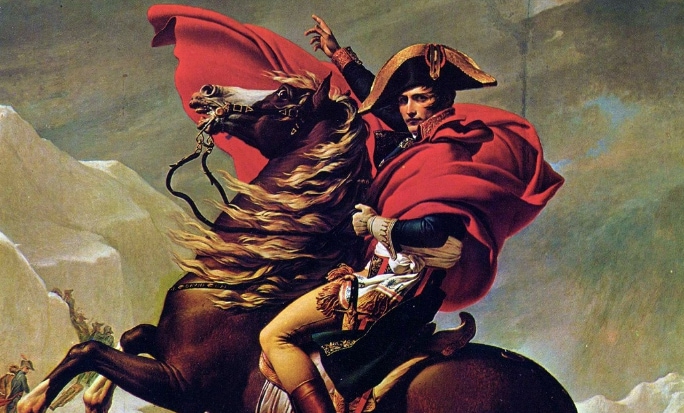
Born to Carlo Buonarparte, a renowned lawyer, and Letizia, Napoleon shared his lineage with ancient Tuscan nobility. In the 16th century, his ancestors had emigrated to Corsia. For his fifty years of life, Napoleon was motivated by conquest and land expansion, which is evident through his military accomplishments.
Though many think of him as a historical personality, he made lasting institutional and civil developments in France. Today, the Code Napoleon forms the basis of Law in France and Louisiana State. Want to know more about Napoleon's life? Check out this Napoleone life timeline.
In this article
Who Was Napoleon Bonaparte?
Napoleone Bonaparte, often called Le Petit Caporal or Napoleon I, was the most celebrated revolutionary French military leader. A military officer-cum-Emperor, he revolutionized French military training and protocols and left a lasting legacy with institutional reforms in the country.
Napoleon started his military career as a revolutionary leader and the first consul of the newly established French Council Directory. However, after notable conquests, Napoleon returned to France and abolished the Directory, declaring himself Emperor.
That said, his life was not all starry. The last decade of his life was full of challenges and politico-military conquests against European leaders. After a series of defeats, the renowned leader abdicated the throne and went into exile, ending with a mysterious death.
Significant Achievements
Before we jump to Napoleone’s life timeline, let us discuss some of his military and political geniuses.
Napoleon's Rise to Power
After the French Republic directory was established in 1796, Napoleon's military geniuses were shown through his Italian campaign against Austria. He advanced 80 miles into Vienna using rapid movements and earned considerable territory.
Not only this, but the general saw this as an opportunity for self-advancement in 1799. He overthrew the monarchy and established a Consulate. Out of the three consuls, he was the first to become a consul for life.
Napoleon Legacy
Though he spent his final days in exile, the Emperor left a long-lasting legacy in France, the most prominent being the successful French Revolution. Moreover, he left robust institutions behind, including the judicial system, the Napoleonic Code, military academies, a centralized university, and the central bank.
Napoleon Bonaparte: Life Before Rise to Power
Personal Life and Family
1769 - Birth of Napoleon
Born in August 1769 in Ajaccio to Carlo and Letizia Romalino Buonaparte, Napoleone was the second son of eight surviving children.
1796 - Marriage to Josephine de Beauharnais
After becoming commander-in-chief, Napoleon married Josephine de Beauharnais. However, their marriage ended in 1809 as she could not produce an heir.
1810 - Second Marriage to Marie Louise
One year later, Napoleon married Marie-Louis of Austria. Most people believe it to be a political marriage.
1811 - Birth of Napoleon Francois Joseph Charles Bonaparte
In March 1811, an heir was born to Napoleon called Napoleon Francois Charles Joseph Bonaparte. He was given the title “King of Rome.”
Education
1778- Schooling
Napoleon did early schooling in mainland France. He mastered the French language and excelled at subjects like Mathematics and History.
1779-1785 - Military Training at Paris
Once he turned ten, Napoleone started his formal education at Brienne Military School. After five years, he joined the French Military Academy in Paris. There, he trained as an army officer, learned the use of weapons, and rode horses. He received a graduate diploma in 1785.
French Revolution
1789 - The French Revolution Begins
After Napoleon was stationed in Valence for the first time, a Paris mob stormed the Bastille, marking the start of the French Revolution.
1793 - France Becomes a Republic
Within three years, the French Legislative Assembly made France from a monarchy to a republic governed by convention. One year later, King Louis XVI was guillotined, and several aristocrats, generals, and clerics left France.
1793-1974 - Reign of Terror
Predominantly, 1793 marked the bloody business of the French revolutionaries, the Reign of Terror. During this reign, around 300,000 moles were imprisoned, 17,000 were guillotined, and 10,000 died in prisons without any trials. The July of 1974 marks the end of this bloodshed.
With the end of 1793 approaching, Napoleon defeated the British Royal Navy in Toulon Port. As a result, he earned the general rank and popular support of the masses.
1795 - A New Constitution was Developed
The French Republic Convention introduced a new constitution the following year. It established the five-member directory and appointed French government leaders. In a protest by Royalists and anti-republican forces in Oct, Napoleon opened fire to support the directory, gaining the young general absolute support.
Napoleon Bonaparte's Rise to Power
Commander, Emperor, Conqueror
1796 - Napoleon Became Commander-in-Chief
In 1796, Napoleon was appointed Commander-in-Chief for his support of the newly established government, getting him to command the French army in Italy.
1796-98 - Napoleon Conquest Begins
The years were about Napoleon's legends of acquiring lands in Italy against Austria. From 1796 to 1797, Napoleon won the Battle of Lodi, Arcole, and Rivoli and negated the Campo-Formio Treaty with Austria.
The following year, the Commander-in-Chief begins his conquest campaign against Egypt. The series of conquests was marked by events like the Fall of Alexandria, the Fall of Cairo, and wins in the Battle of Pyramid against the Mamelukes and the Battle of Aboukir.
1799 - Coup D’etat Brumaire
Upon receiving reports of the uprising and turmoil in France, Napoleon returned to Paris. He managed to engineer the overthrow of the coup d’etat of Buramaire 18. Consequently, a new consulate government was proposed. As a first consul, Napoleon led a campaign and defeated Austria in the Battle of Marengo.
1800-1801 - Napoleon Introduced Policies of Reconciliation
Given the good reputation, Napoleone introduced reconciliation policies to restore peace in the country. He decided to grant amnesties to exiled aristocrats in France. One year later, in 1801, a concordat was agreed by Napoleon and Pope Pius VII, recognizing Catholicism as the popular religion of France.
1802 - Napoleon Became First Consul
Napoleon dispatched an army unit to control Saint Domingue, a French colony in the West Indies. Consequently, the commander-in-chief became the first consul for life. The same year, Napoleon also reintroduced the slave trade in all French Colonies.
1804 - Napoleon Transformed into an Emperor
The consulate had a status change and was declared the Empire in 1804, making Napoleon the Emperor of France. A coronation ceremony of Napoleon and Josephine was held at Notre Dame Cathedral in Paris.
1805 - European States Joined Britain Against France
In 1805, Napoleon was crowned as the king of Italy in Milan. Seeing this, European powers like Austria and Russia join hands with Britain against France. Therefore, Napoleon decided to invade England; however, he was defeated by a British naval fleet in the Battle of Trafalgar.
1807 - Napoleon Joined Tsar Alexander I
Desperate by the defeat, Napoleon offered peace with Czar Alexander I under the Treaty of Tilsit after defeating Austria and Russia in the Austerlitz Battle.
Napoleon Bonaparte's Fall from Power
Napoleon's Downfall and Battle of Waterloo
1812 - Napoleon Invaded Russia
In 1812, Russia withdrew from the Continental system, a treaty rejecting Russia's trade with Britain. Afterward, Napoleon marched into Moscow and held a deadly war on Borodino. However, Czar Alexander I did not surrender, resulting in losses to the French army amid harsh winter. Given the situation, Napoleon retreated and returned to Paris, abandoning his army.
1813-14 - Battle of Leipzig
The battle of Leipzig marked the downfall of Napoleon after getting defeated by the combined European forces (Russia, Austria, Sweden, and Prussia). Therefore, he resigned from the Emperor position and went to the Elba Islands.
1815 - Defeat at the Battle of Waterloo
He returned to France during the “Hundred Days” and tasted another defeat at the Battle of Waterloo. Finally, he abdicates the throne.
Final Years
1816 - Napoleon Begins Exile
After a humiliating defeat, Napoleon began his exile in Saint Helena, surrounded by two 600 ft cliffs.
1821 - Napoleon Died
At the age of 51, Napoleon died mysteriously during exile.
How to Make a Life Timeline on EdrawMax?
Want to make a timeline of your favorite historical figure? You can easily create a life timelines using online diagramming software like EdrawMax. Here is how you can create one:
Step1
Download the EdrawMax Desktop version or visit EdrawMax Online.
Step2
Once launched, navigate to the EdrawMax Template Community by clicking Templates > Timeline from the dashboard.

Step3
You will see several pre-designed examples. Skim a little to find the right and click Use Immediately.
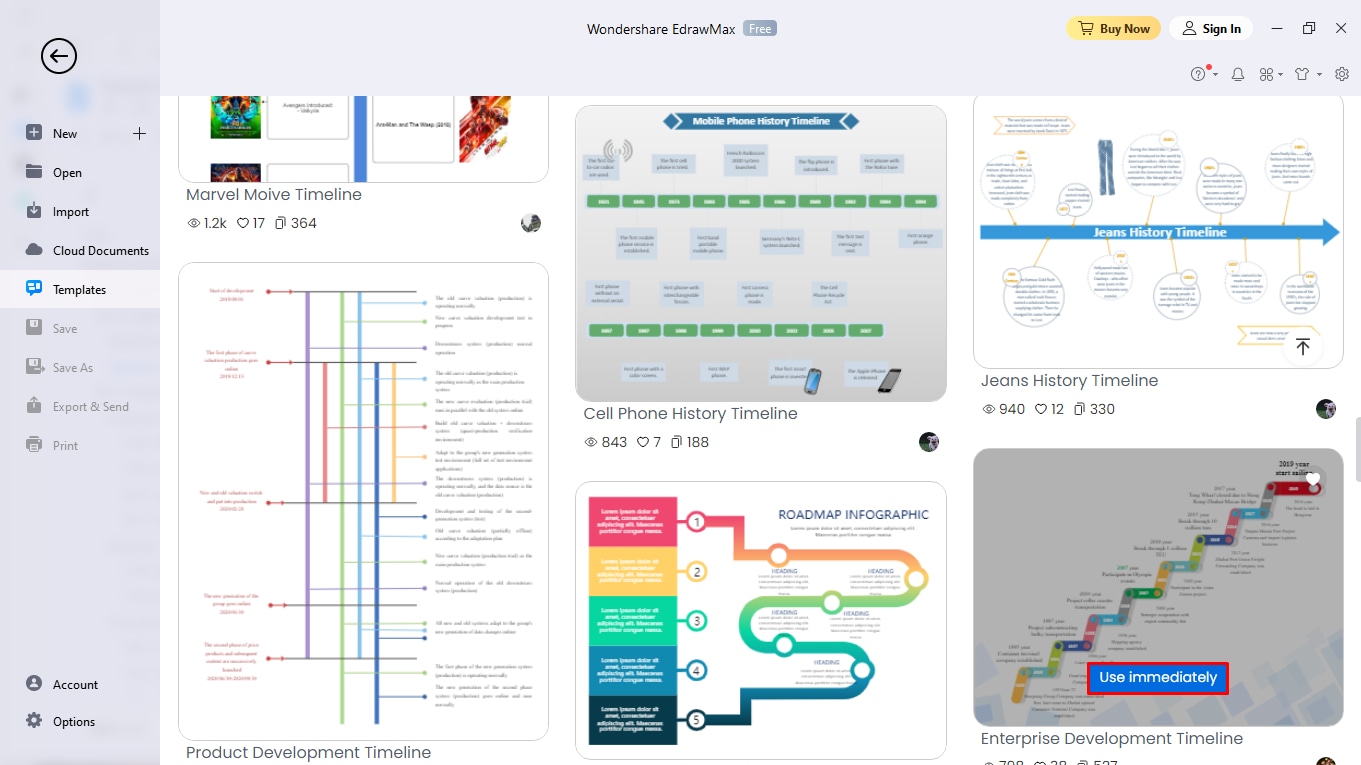
Step4
Once opened in the editing panel, add or remove events using symbols from the left-side symbol library. Insert information by double-clicking anywhere on the canvas.
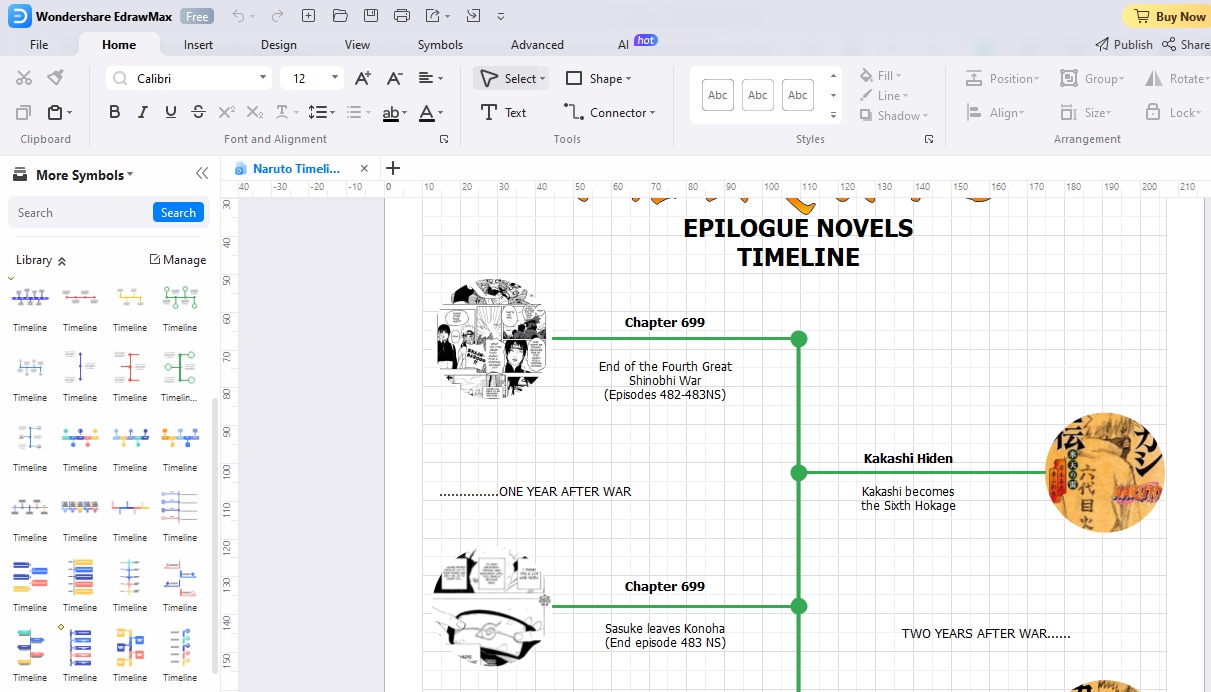
Step5
Change the formatting from the Design tab on the top toolbar. Adjust the theme, color scheme, and layout of the timeline.
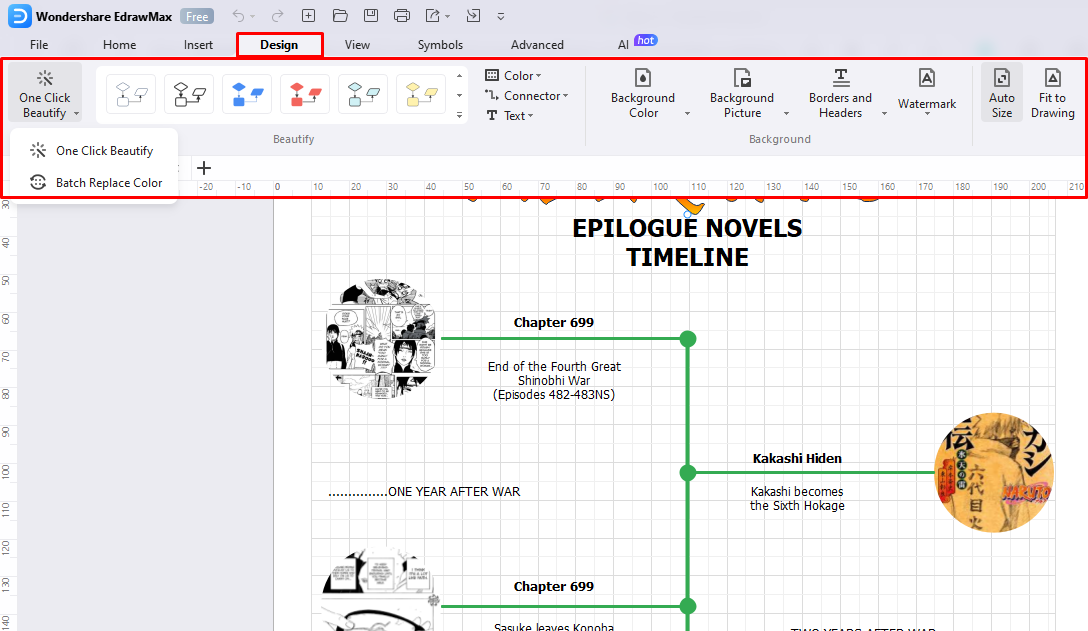
Step6
Finally, export the timeline in over 10 formats. Click the Export icon > Preferred Format from the quick-access toolbar.
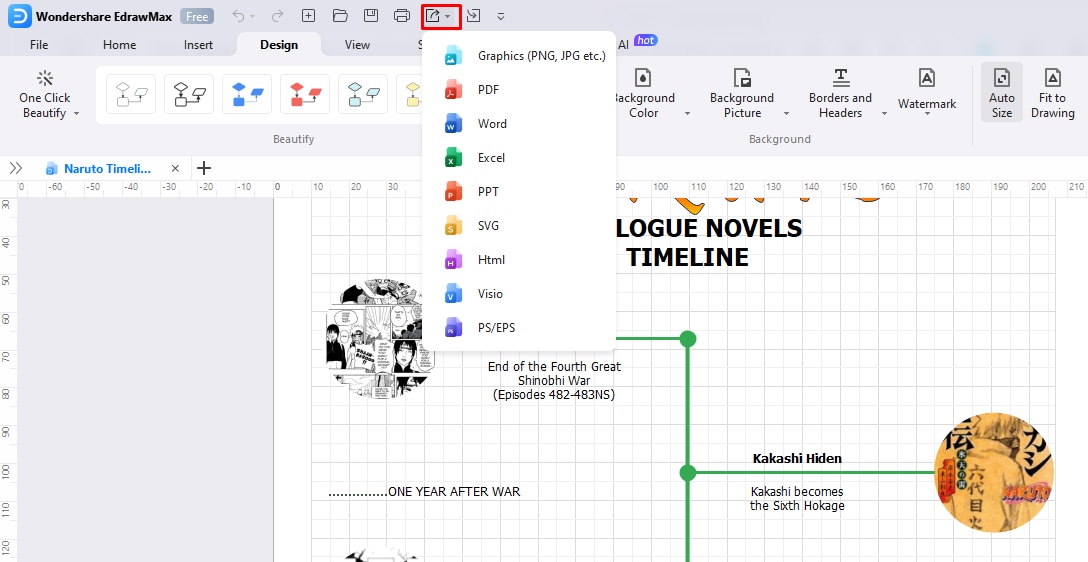
What is Wondershare EdrawMax?
But why choose EdrawMax? It is an AI-powered intuitive diagramming software for both pros and beginners. It has a beginner-friendly interface and also provides a free version with which you can access most basic functions.
Key Features:
All-in-one platform: It supports over 280 types of diagrams including flowcharts, mind maps, timelines, floor plans, Gantt charts, and family trees.
Rich resources: It offers over 16,000 templates, including tons of timelines, and over 26,000 symbols. Moreover, the software supports timeline-specific symbols to plot events and historical hallmarks.
Export Flexibility: Once you finish the drawing part, it allows exporting and sharing timelines in multiple formats (Visio, PNG, JPG, PDF, etc) and popular social media sites like Facebook, Instagram, etc.
Conclusion
Napoleon was a force that brought the post-revolutionary France in order and made it survive the predators. Along with military conquests and territorial expansions, the Emperor introduced civil codes and military protocols to promote a sense of nationality and order in the country.
The world may not remember him as the just king, but he was the celebrated Emperor for the French people. Want to visualize the events that transformed the France we know today? Get your hands on this Napoleon’s life timeline. Or get similar templates of renowned historical personalities from EdrawMax template community.





 below.
below.  below.
below. 

